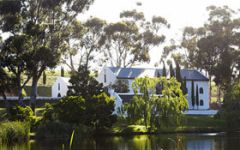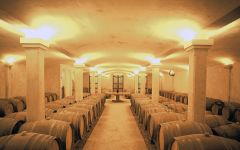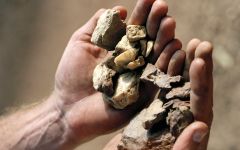Hamilton Russell Chardonnay 2018
- Decanter
-
Wine
Spectator -
Robert
Parker -
Wine
Enthusiast



Product Details
Your Rating
Somm Note
Winemaker Notes
A tight, minerally wine with classic Hamilton Russell Vineyards length and complexity. Unusually prominent pear and lime fruit aromas and flavours are brought beautifully into focus by a tight line of bright natural acid and a long, dry minerality. An elegant, yet textured and intense wine with a strong personality of both place and vintage
Professional Ratings
-
Decanter
Showing just a hint of reduction, this is a lovely Chardonnay that takes me back to the Burgundy 2018 en-primeur week in January. Côte de Beaune-like on the nose, with restrained notes of orange box and stoned fruits. This has great focus and grip on the palate and although there is plenty of weight and fleshiness, the prominent acidity keeps all the elements in perfect balance. Perhaps a bit more Corton-Charlemagne than Meursault, this is a very fine, top-class, Chardonnay.
-
Wine Spectator
A substantial white, with a big profile. The acidity gives this energy, delivering plenty of zest to the ripe pear and blood orange flavors, framed by hints of cream, tarragon and nutmeg. The vibrant finish leaves a mouthwatering aftertaste. Drink now through 2025.
-
Robert Parker's Wine Advocate
The nose of the 2018 Chardonnay is full and rich, with an oaky core and subtle hints of reduction, expressing delicate fruit aromas of yellow apple, pear and lemon curd. The palate is clean, fresh and zippy with a good core of citrus. The finish is clean and crisp, with a soft oak expression that lingers on the medium to long finish. This is a beautiful and classic expression of Chardonnay from the Hemel-En-Aarde Valley, and it's sure to please any Chardonnay lover. 489,080 bottles made.
-
Wine Enthusiast
A shining golden-yellow color, this smells as rich as it looks, with assertive scents of ripe melon, peach preserves, orange oil and creamed corn. The palate is similarly rich and opulent, with more ripe stone-fruit and orange-oil flavors that are hit by a toasty, nutty overlay. There’s just enough acidity to keep it all from feeling too rich or overdone, with a lingering wood-spice note to the finish.
Other Vintages
2022-
Robert
Parker -
James
Suckling
-
Robert
Parker -
James
Suckling -
Wine
Enthusiast
-
Robert
Parker -
Wine
Spectator -
James
Suckling
- Decanter
-
Wine
Enthusiast -
Robert
Parker
-
James
Suckling -
Jeb
Dunnuck -
Wine
Spectator -
Robert
Parker - Decanter
-
Wine
Spectator -
Robert
Parker -
James
Suckling - Decanter
-
Wine
Spectator -
Robert
Parker
-
Robert
Parker -
Tasting
Panel -
Wine
Spectator
-
Tasting
Panel -
Wine
Spectator -
Robert
Parker
-
Tasting
Panel -
Wine
Spectator -
Robert
Parker -
Wine &
Spirits
-
Wine
Spectator -
Tasting
Panel -
Robert
Parker -
Wine
Enthusiast
-
Wine
Spectator -
Robert
Parker
-
Wine
Spectator -
Wine
Enthusiast
-
Wine
Spectator
-
Wine
Spectator
-
Wine
Spectator
-
Wine
Spectator





Hamilton Russell Vineyards – one of the most southerly wine Estates in Africa and one of the closest to the sea – pioneered viticulture and winemaking in the beautiful, cool, maritime Hemel-en-Aarde Valley appellation, just behind the old fishing village of Hermanus. Tim Hamilton Russell purchased the undeveloped 425-acre property in 1975, after an exhaustive search for the most southerly site on which to make South Africa’s top cool climate wines from a selection of noble varieties. His son, Anthony Hamilton Russell, who took over in 1991 (finally buying the property in 1994), narrowed the range to only Pinot Noir and Chardonnay and registered Hamilton Russell Vineyards as an Estate, committing to work only with grapes from their terroir. Today, Anthony and his wife Olive, winemaker Emul Ross, and viticulturist Johan Montgomery are completely dedicated to expressing the personality of the Hamilton Russell Vineyards terroir in their wines. Tiny yields and intense worldwide demand keep the elegant, highly individual, estate-grown Pinot Noir and Chardonnay in very short supply.

One of the most popular and versatile white wine grapes, Chardonnay offers a wide range of flavors and styles depending on where it is grown and how it is made. While it tends to flourish in most environments, Chardonnay from its Burgundian homeland produces some of the most remarkable and longest lived examples. California produces both oaky, buttery styles and leaner, European-inspired wines. Somm Secret—The Burgundian subregion of Chablis, while typically using older oak barrels, produces a bright style similar to the unoaked style. Anyone who doesn't like oaky Chardonnay would likely enjoy Chablis.

With an important wine renaissance in full swing, impressive red and white bargains abound in South Africa. The country has a particularly long and rich history with winemaking, especially considering its status as part of the “New World.” In the mid-17th century, the lusciously sweet dessert wines of Constantia were highly prized by the European aristocracy. Since then, the South African wine industry has experienced some setbacks due to the phylloxera infestation of the late 1800s and political difficulties throughout the following century.
Today, however, South Africa is increasingly responsible for high-demand, high-quality wines—a blessing to put the country back on the international wine map. Wine production is mainly situated around Cape Town, where the climate is generally warm to hot. But the Benguela Current from Antarctica provides brisk ocean breezes necessary for steady ripening of grapes. Similarly, cooler, high-elevation vineyard sites throughout South Africa offer similar, favorable growing conditions.
South Africa’s wine zones are divided into region, then smaller districts and finally wards, but the country’s wine styles are differentiated more by grape variety than by region. Pinotage, a cross between Pinot Noir and Cinsault, is the country’s “signature” grape, responsible for red-fruit-driven, spicy, earthy reds. When Pinotage is blended with other red varieties, like Cabernet Sauvignon, Merlot, Syrah or Pinot Noir (all commonly vinified alone as well), it is often labeled as a “Cape Blend.” Chenin Blanc (locally known as “Steen”) dominates white wine production, with Chardonnay and Sauvignon Blanc following close behind.
